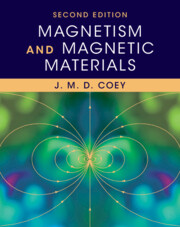Refine search
Actions for selected content:
212026 results in Engineering
Computer Networks
- An Algorithmic Approach
- Coming soon
-
- Expected online publication date:
- July 2026
- Print publication:
- 01 May 2027
-
- Textbook
- Export citation
High Current ESD
- Physics and Design
- Coming soon
-
- Expected online publication date:
- July 2026
- Print publication:
- 31 July 2026
-
- Book
- Export citation
Systems Architecting Urban Infrastructure
- Designing Complex Socio-technical Systems for Sustainable Cities
- Coming soon
-
- Expected online publication date:
- July 2026
- Print publication:
- 31 July 2026
-
- Book
- Export citation
The Physics of Interstellar Travel
- Coming soon
-
- Expected online publication date:
- May 2026
- Print publication:
- 31 May 2026
-
- Book
- Export citation
Quantum Engineering
- Theory and Design of Quantum Coherent Structures
- Coming soon
-
- Expected online publication date:
- May 2026
- Print publication:
- 31 May 2026
-
- Book
- Export citation

Fatigue Design of Marine Structures
- Coming soon
-
- Expected online publication date:
- May 2026
- Print publication:
- 31 May 2026
-
- Book
- Export citation

Accelerating Deep Neural Networks
- Coming soon
-
- Expected online publication date:
- May 2026
- Print publication:
- 31 May 2026
-
- Book
- Export citation
Engineering Dynamics
- Coming soon
-
- Expected online publication date:
- April 2026
- Print publication:
- 30 April 2026
-
- Textbook
- Export citation

Microstructural Rheology of Complex Fluids
- Coming soon
-
- Expected online publication date:
- April 2026
- Print publication:
- 30 April 2026
-
- Book
- Export citation
Advances in Material Science and Applications
- Bulk (Silicon) vs Nano (Graphene)
- Coming soon
-
- Expected online publication date:
- March 2026
- Print publication:
- 01 May 2027
-
- Book
- Export citation
Control Systems Theory
- Coming soon
-
- Expected online publication date:
- March 2026
- Print publication:
- 01 May 2027
-
- Textbook
- Export citation
Elementary Cartesian Tensors
- With Application to Engineering Problems
- Coming soon
-
- Expected online publication date:
- March 2026
- Print publication:
- 01 May 2027
-
- Textbook
- Export citation

A Student's Guide to the Laws of Thermodynamics
- Coming soon
-
- Expected online publication date:
- March 2026
- Print publication:
- 31 March 2026
-
- Textbook
- Export citation

Random Vibrations
- A Primer
- Coming soon
-
- Expected online publication date:
- March 2026
- Print publication:
- 31 May 2026
-
- Textbook
- Export citation
Transmission Lines
- Equivalent Circuits, Electromagnetic Theory, and Photons
- Coming soon
-
- Expected online publication date:
- March 2026
- Print publication:
- 31 March 2026
-
- Book
- Export citation

Magnetism and Magnetic Materials
- Coming soon
-
- Expected online publication date:
- March 2026
- Print publication:
- 28 February 2026
-
- Book
- Export citation
Materials Management
- Coming soon
-
- Expected online publication date:
- February 2026
- Print publication:
- 31 March 2026
-
- Textbook
- Export citation
Advances in Material Science and Applications
- Bulk (Silicon) vs Nano (Graphene)
- Coming soon
-
- Expected online publication date:
- February 2026
- Print publication:
- 01 May 2027
-
- Book
- Export citation

Coding for Erasure Channels
- Coming soon
-
- Expected online publication date:
- February 2026
- Print publication:
- 28 February 2026
-
- Book
- Export citation

Analytical Aircraft Flight
- Dynamics, Performance, Stability, and Control
- Coming soon
-
- Expected online publication date:
- February 2026
- Print publication:
- 29 January 2026
-
- Textbook
- Export citation
